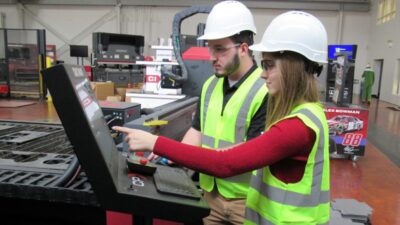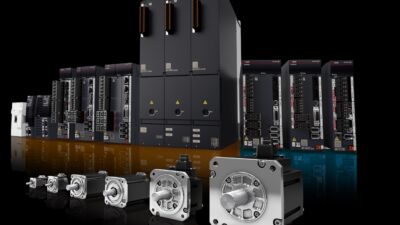Over the past few decades, analyzers have evolved into sophisticated chemical sensors and automation instruments that have migrated from the laboratory to the field for integration into real-time process control systems. However, front-end designs of analytical systems—the sample handling and preparation—have not improved appreciably for many years, including the interface for integ...
AT A GLANCE
NeSSI
TEDS
Communication architecture
Physical layer specs
Over the past few decades, analyzers have evolved into sophisticated chemical sensors and automation instruments that have migrated from the laboratory to the field for integration into real-time process control systems. However, front-end designs of analytical systems—the sample handling and preparation—have not improved appreciably for many years, including the interface for integration.
During a 1999 ISA symposium, a radical rethink of analyzer sample-handling and preparation system designs was conceived as the New Sampling/Sensor Initiative, or NeSSI. A consortium of end-users, suppliers, and academics working under the umbrella of the Center for Process Analytical Chemistry (CPAC) at the University of Washington developed the vision and specifications for NeSSI sample systems, including: modular and miniaturized sampling components; smart transducers; field mounting capabilities at the sample point in potentially explosive atmospheres; and easy integration into plant control systems.
The NeSSI specification defines two interface “rails” that allow for simplified system integration. A fluid rail enables modularity by providing a standard interface to connect flow paths between devices. A NeSSI bus rail enables the smart transducer and field-mounting capabilities by providing IS power and digital communications between the smart sampling system components, the analyzer, and the process control system.
In August 2002, a 1.5-in.-square NeSSI component-footprint for the fluid rail was adopted in the ANSI/ISA 76.00.02 standard, which defines properties and physical dimensions for surface-mount fluid distribution components. The fluid rail controls the dimensions and location of sealing surfaces to allow changes of one system element without modification of the entire system, thereby streamlining design and maintenance.
Adoption of ANSI/ISA 76.00.02 led to the emergence of what are referred to as NeSSI Generation I miniature and modular sample-systems. For example, modular platform components (MPC) consist of a surface-mount layer made up of components such as valves, filters, and adapters; a substrate layer providing the flow path between the surface-mount components; and a manifold layer for the flow path between two or more parallel substrates.
The NeSSI consortium then turned its attention to the bus rail, publishing the NeSSI Generation II specification. The specification calls for upgrading the traditional manual rotometers, gauges, and metering valves used in sample systems to smart pressure, temperature, and flow sensors that are automated and have plug-and-play capabilities. The new sensors would monitor the sample-handling and preparation processes and be controlled by a proposed family of intelligent valves.
With many of the NeSSI systems expected to be deployed in the potentially explosive atmospheres common in refineries and chemical plants, the consortium identified an IS transducer bus as the key technology for NeSSI Gen II to become a reality. Unfortunately, adoption of an IS NeSSI bus standard has not been nearly as forthcoming as the fluid rail standard.
Bus conundrum
On the surface, selecting an open-standard IS transducer-bus seems to be a choice among various protocols, including: FOUNDATION fieldbus, Profibus PA, HART, or ControlNet. However, the NeSSI consortium believed these buses were not particularly well suited for the types of smart devices that would populate a NeSSI Gen II system due to concerns about the architecture, size, and cost.
Architecturally, the IS buses do not match the design of NeSSI devices. Typically, IS buses are designed to operate a few sophisticated devices in a complex messaging format over long distances (for example, 1.9 km for F OUNDATION fieldbus). However, NeSSI Gen II components are simple sensors and actuators that support basic configuration and diagnostic functions, thereby requiring a less complex communications (NeSSI devices communicate with a local controller typically located under 10 meters away).
On the size issue, the 1.5-in.-square ANSI/ISA 76.00.02 footprint places a serious constraint on the amount of electronics that can be fitted onboard a NeSSI Gen II device. Major IS buses, excepting HART, require at a minimum: a relatively powerful microcontroller, a protocol controller ASIC (application-specific integrated circuit), a bus interface, and driver circuits. Size and number of required electrical components makes it difficult, at best, to squeeze an IS bus—along with the requisite input/output (I/O) circuitry, connectors and other miscellaneous electronics—into the NeSSI footprint.
Finally, the relative cost of IS buses—compared to NeSSI devices—is high. IS buses were designed to be deployed in larger process control valves and transmitters in which the bus technology represents a fraction of the device’s total cost. NeSSI devices typically cost much less than larger process control valves or transmitters, making the cost of a smart NeSSI device that uses one of the IS bus technologies much higher than its non-networked counterpart.
Industries not using process analytics (semiconductor, consumer electronics, and automotive) use simpler, smaller and less expensive buses, such as USB and CAN (controller area network). However, these options are not intrinsically safe.
Given the choices, decision makers are faced with the NeSSI bus conundrum: Do they make one of the IS buses simpler, smaller, and less expensive, or do they make one of the simpler, smaller, and less expensive buses intrinsically safe?
Technical solution
A NeSSI workshop hosted by the National Institute of Standards and Technology (NIST) during summer 2003 addressed the NeSSI bus conundrum, identifying the CANopen protocol as a potential IS bus to control NeSSI Gen II devices. At the time, the IEEE P1451.6 project had just been organized to harmonize the IEEE 1451 family of smart transducer interface standard transducer electronic datasheets (TEDS) with a CANopen standard device profile (DS 404) managed by CAN in Automation (CiA). Harmonization of the TEDS and the DS 404 device profile promotes interoperability between IEEE 1451 and CANopen devices, increasing user choices for compatible field devices.
The primary benefit of IEEE P1451.6 is to provide an open standard method from which transducer and closed-loop controller manufacturers can offer standard plug-and-play multi-channel devices for cost-effective sensor and actuator networks. CANopen simplifies device communications, as it provides a flexible and convenient method for developing automation solutions on the CAN bus.
In the ISO open systems interconnect (OSI) reference model, CAN functions as the physical (layer 1) and data link (layer 2) layers. CANopen (layer 7) serves as the application layer. OSI layers 3 through 6 are not used in CAN. In addition to CANopen, predefined interfaces are described in the so-called “device profiles,” which are specific to device types (such as pressure and temperature) and industry standards.
CiA members have developed device profiles that specify how transducers and closed-loop controllers connect on the application layer in a plug-and-play network. One profile, CiA DS 404 V1.2 (CANopen device profile measuring devices and closed-loop controllers), has been tested and proven in applications for more than 10 years. CANopen device profiles like DS 404 V1.2 describe units for measuring or closed-loop control of different physical quantities. They use functional block descriptions—including digital input, analog input, digital output, analog output, controller, alarm, and device—that can be combined to create real devices. Once configured, devices can run measuring or control tasks without further real-time communication with host systems. Control loops are realized in the controller devices.
CiA signed rights to DS 404 V1.2 over to IEEE for use in the P1451.6 specification, adding IS definitions to meet the new requirements. Once existing transducers and closed-loop controllers meet additional IS requirements, they will be readily available for implementation in NeSSI Gen II devices.
As an option, IEEE P1451.6 addresses the IS requirement for NeSSI networks. First, it closely examines the physical requirements for low-power communication and control circuits. Then, it applies new low-power 3.3-V BiCMOS (bipolar and complementary-metal-oxide semiconductor) technology from Texas Instruments, which provides the technical feasibility for an IS NeSSI bus.
BiCMOS technology uses low-power CAN electronics, making it well suited for IS applications. CMOS is a voltage-mode technology that requires very little quiescent current to maintain steady-state operating points. (SN65HVD233 CAN transceiver requires only a 3.3-V supply voltage, and CMOS transistors allow for low-voltage, high-current outputs.) This may not be the case for other bipolar technologies, in which transistors are current-mode devices that require steady-state input current to maintain operating points.
In a NeSSI system, networked devices are clustered in a small area, usually less than 1 x 1 meter, and are typically closer than 10 meters to a safe area. The NeSSI consortium realized that this short physical network length meant that bus voltage could be significantly reduced from the standard 24 V dc required to drive signals up to a mile or more. The short distance of the NeSSI bus permits a more manageable 10 V dc bus voltage, allowing a five-fold increase in power budget while maintaining intrinsic safety feasibility. IEEE P1451.6 physical layers are shown in the related graphic.
A typical IEEE P1451.6 IS application has 20 nodes on one system. The worst-case current consumption of this system occurs when 19 nodes respond with an ACK bit to a message from the 20th node. As shown in the photo on page IP9, only 128 mA is required to power all 20 devices and provide for 19 simultaneous dominant bits. This is about one-third of the power required to accomplish the same task using 5 V CAN transceivers. When the transceiver is idle, it consumes an extremely low quiescent current, leaving the majority of the power budget available for diagnostics and operation.
Bipolar transistors featuring CMOS also provide low propagation delays and stable operating points for common-mode voltage control and noise rejection. Common-mode noise rejection in the CAN transceiver is essential for error-free data transmission and for reducing the instances of undetected errors that may lead to critical failures. In addition, CMOS differential circuits radiate substantially less noise to the environment than single-wire communication technologies.
What’s next?
The NeSSI consortium already has made provisions in its Generation II specification that allow for the adoption and recommendation of emerging standards like IEEE P1451.6 to implement IS sample-handling and preparation (see “IEEE P1451.6 roadmap of products and markets” graphic).
Beyond the chemical and petrochemical markets, other opportunities for intrinsically safe systems exist where CANopen communications are already deployed. One example is paint booth robotic applications in the automobile manufacturing industry. To address this and other markets, the IEEE P1451.6 standard can be extended to leverage the CANopen “Application Profile” as a plug-and-play standard designed specifically for the targeted industry.
IEEE P1451.6 physical layer specification
Parameter
Value
Units
Source: Control Engineering with information from Swagelok, Texas Instruments, CAN in Automation, and IXXAT.
Bus Length
10
Meters
Voltage (Uo)
9.5
V dc
Current (Io)
1,000
mA
Capacitance (Co)
500
nF
Inductance (Lo)
8
Nodes
127
Addresses
Connector – M12
5
Circuits
Speed
125
Kbps
CAN recessive bit
8
mA
CAN dominant bit
25
mA
IEEE P1451.6 roadmap of products, markets
Source: Control Engineering with information from Swagelok, Texas Instruments, CAN in Automation, and IXXAT.
In development
•Prototype of IEEE P1451.6 employing the IEEE P1451.6 TEDS and IS hardware.
•First active installation of IEEE P1451.6 interface operating on a multi-channel transducer according to the revised NeSSI bus specification.
Planned
•Development of a testing procedure for qualifying transducers as IS.
•Development of standard slave products with IEEE P1451.6 interfaces, such as I/O modules, valve actuators, pumps and motors.
•Development of managing nodes, such as the NeSSI bus Sensor Actuator Manager (SAM), PLCs, DSC, and other master controllers.
Future
•Develop specific “Application Profiles” (for example, pharmaceutical processing) in which specific application knowledge is a part of the standard communication protocol.
Author Information
Rick Ales is product manager, Swagelok Co.; Steve Corrigan is system engineer, Texas Instruments; Cyrilla Menon is general manager, North America, CAN in Automation; Bill Seitz is president, IXXAT.



